#roman civilization
Video
youtube
Journey back in time to the pinnacle of Roman power and witness the dramatic story of what led to the fall of the mighty Roman Empire. Uncover the internal struggles, leadership challenges, economic decline, and the relentless threat of barbarian invasions. Explore the great shift in Rome's culture, driven by the rise of Christianity, and follow the empire's final decade that sealed its fate. For more visit here
#youtube#Rome before the fall#Ancient Roman Empire#Historical journey#Time travel through history#Roman civilization#Daily life in Rome#Cultural heritage#Legacy of Rome#Ancient history#Rome revealed#Ancient Roman lifestyle#Rome's golden age#Rome at its peak#Decline of the Roman Empire#Roman history exploration#fall of the roman empire#roman empire#the fall of the roman empire#fall of rome#rome the fall of an empire#rome#rise and fall of an empire
1 note
·
View note
Note
Thank you so much for being so generous with your prompts. I find it impossible to render a decent Roman soldier or Centurion or anything to do with Rome's military. Buildings and basic clothing are fine, but not so much with anything else. Any advice would be greatly appreciated.
Yeah, that's because a lot of the source images for Midjourney and probably other AI apps are not good to begin with.
You may have to use the 'blend' command or at least reference an image with known good soldiers and costumes. There are a lot from the late 19th century. Good luck!
0 notes
Text
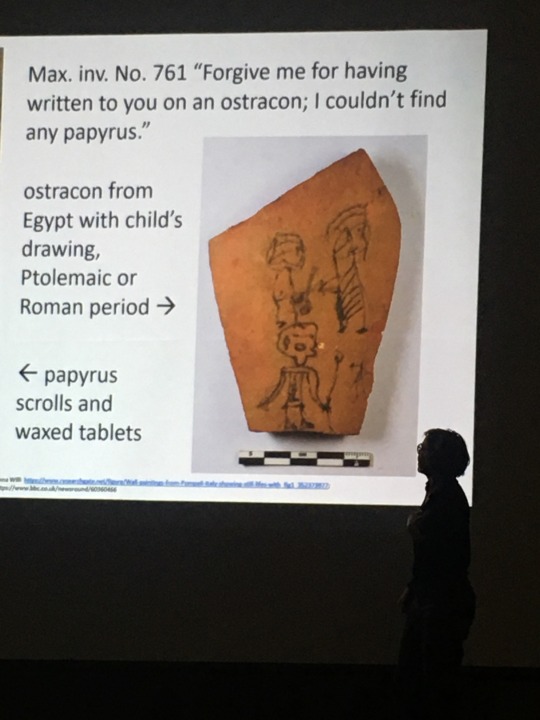
ancient kid doodles make me so soft 🥹
#this is from my roman civilization class and i-#it reminds me of my cousin who would draw when i would babysit her#it reminds me of younger me who would doodle on every single surface driving my father mad for handing in hoework with flowers and stuff in#the margins#kids stay the same throughout time#vk overshares in the tags#roman civilization
1 note
·
View note
Text



Roman Glass Bowl
1st century B.C.
The J. Paul Getty Museum.
#Roman Glass Bowl#1st century B.C.#glass#ancient glass#ancient artifacts#archeology#archeolgst#history#history news#ancient history#ancient culture#ancient civilizations#ancient rome#roman history#roman empire#roman art#blue
2K notes
·
View notes
Text
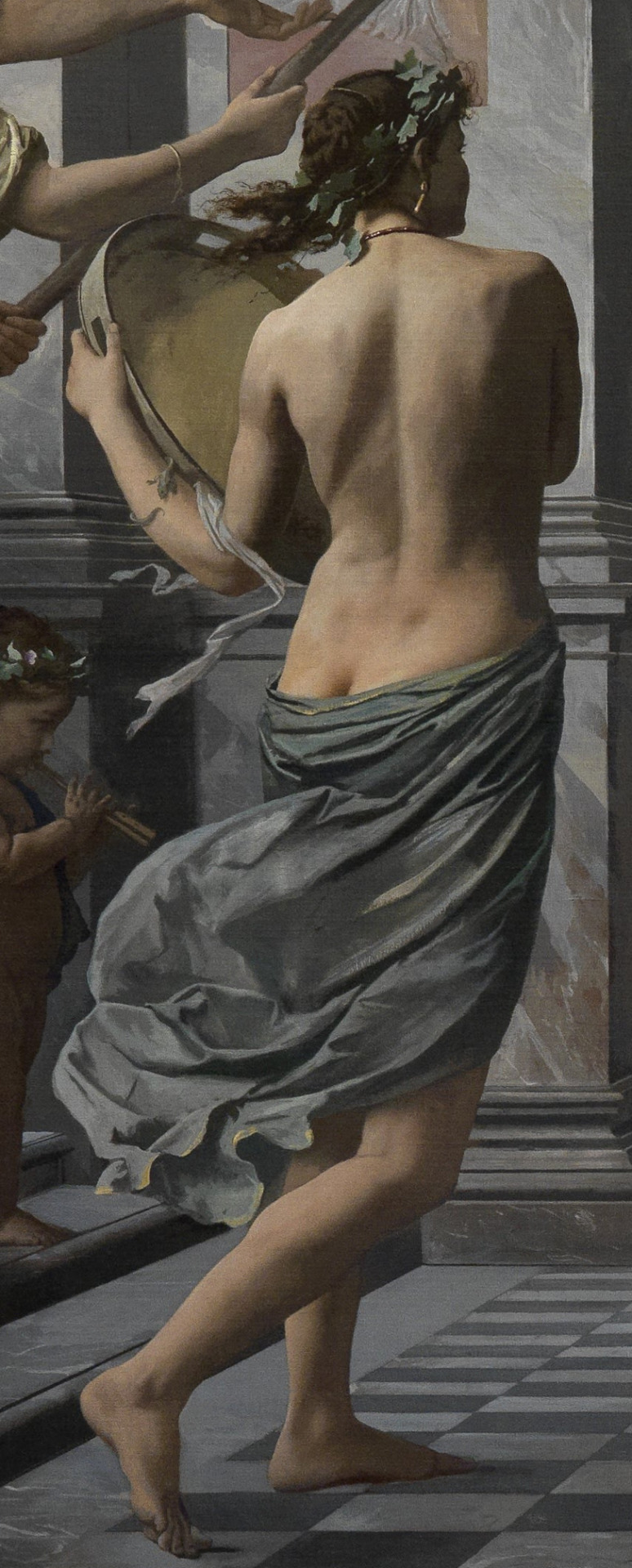
Anselm Feuerbach (German, 1829-1880)
Plato's Symposium, Detail, 1869
#Anselm Feuerbach#german art#mediterranean#greece#rome#greek#roman#cradle of civilization#classical art#greek mythology#plato#plato's symposium#1800s#revelry#female figure#female#woman#europe#european
2K notes
·
View notes
Text

Mosaic with sea creatures from the House of the Faun, Pompeii.
#ancient rome#roman empire#ancient art#ancient history#ancient culture#ancient civilizations#pompeii#mosaic
805 notes
·
View notes
Text
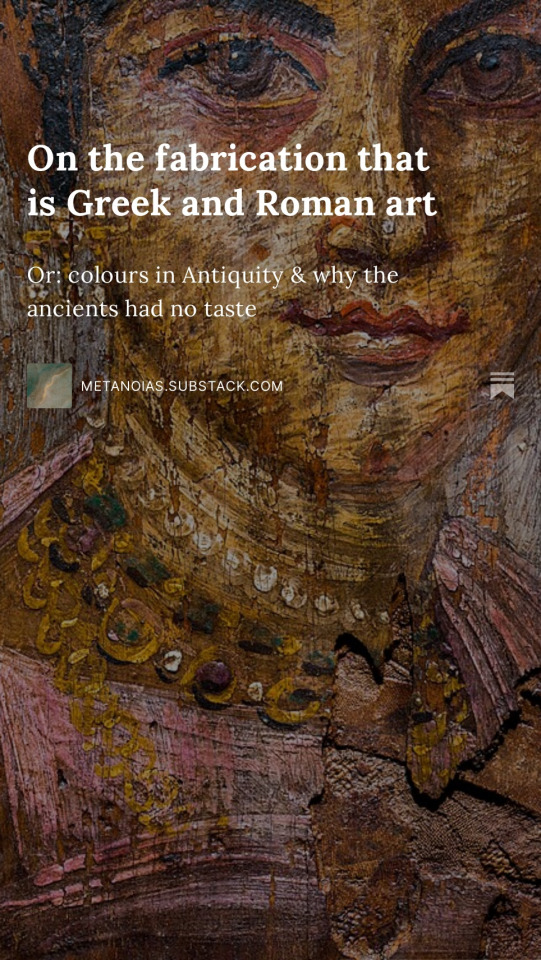
When you think of ancient Greece or the Roman Empire, visions of white togas, ivory temples and sand-coloured amphitheatres likely come to mind.
If so, you might be in for a surprise.
Because this off-white and eggshell-dominated palette, which inspired the pristine surfaces of Renaissance sculptures and the blank facades of Neoclassical buildings, is… a lie.
We now know the ancient world was steeped in colour. It was, perhaps, a tad too colourful for our modern sensibilities — even borderline garish at times.
Click here to learn why generations of scholars and artists believed in a monochrome Classical Antiquity and see historically accurate reconstructions of ancient statues and buildings in all their glorious peacockery.
#art#ancient art#ancient greece#ancient rome#ancient history#ancientmonuments#ancient cities#ancient civilizations#ancient sculpture#roman empire#roman art#art history#history#archeology#archaeology#colors#colours#colour#italy#greece#greek mythology#roman mythology#ancient greek#rome#rome italy#histoire#historic
708 notes
·
View notes
Photo


нιroѕнι aвe aѕ lυcιυѕ
Thermae Romae (2012) · dir. Hideki Takeuchi
#perioddramaedit#filmedit#hiroshi abe#ancient rome#roman empire#architecture#filmgifs#moviegifs#civil engineering#roman baths#2nd century#pax romana#thermae romae#film#movie#beautiful men
8K notes
·
View notes
Text

Our Lady of Tourists Catholic Wayside Shrine, Gorce Mountains, Poland by Jerzy Górecki
#wayside shrine#poland#catholic#travel#mountains#gorce#wanderlust#europe#nature#tourism#landscape#tourist#explore#solo trip#bible#christianity#christian#roman catholic#catholicism#western civilization
244 notes
·
View notes
Text

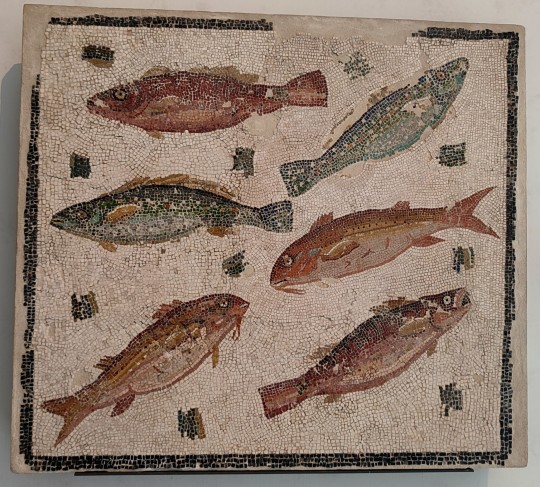



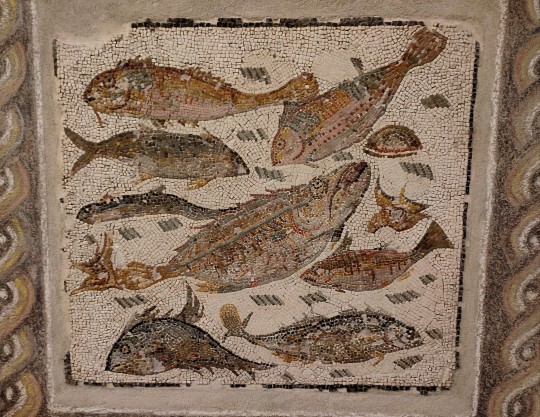
Mosaics from Palazzo Massimo, National Roman Museum, Rome
#roman empire#roman art#Mosaic#mosaic tile#animals#ancient civilizations#ancient art#Rome#Italy#Nature#Octopus#Bird#Cat
740 notes
·
View notes
Text

And the experience of each man was peculiar. For Pompey's name and power were greater in the city when he was away from it, owing to his campaigns; but when he was at home, he was often less powerful than Crassus, because the pomp and circumstance of his life led him to shun crowds, retire from the forum, and render aid to a few only of those who asked it of him, and then with no great zest, that he might keep his influence the more unimpaired for use in his own behalf. But Crassus was continually ready with his services, was ever at hand and easy of access, and always took an active part in the enterprises of the hour.
Plutarch, Crassus
from the vault of half finished one shots and rejected scenes! what a pair of guys! some real complementary personality stuff going on with these two!
bsky ⭐ pixiv ⭐ pillowfort ⭐ cohost
#where’s that paper that’s all ‘Fulvia was a manager and Antony was manageable’ there’s a similar dynamic going on here#but it’s both of them @ each other. Crassus does have a very political manager type of. vibe. though. so it could apply to multiple people#roman republic tag#komiks tag#also this is why Pompey and Caesar were a bad match. like of course they were going to get divorced civil war style#anyway. the new tvxq song. any older kpop fans here. ‘So say you want me cause I’m down’ is rattling around in my head abt these two#when they decided to fuck politics together. like oooooh you two chose each other for real#if I was staging a movie or smth the scene where they shake hands on it would be when changmin does THAT with his vocals#tris homines#marcus licinius crassus#gnaeus pompeius magnus
232 notes
·
View notes
Text
Dating sim but it takes place in 50 BCE and your real goal is to prevent Caesar and Pompey's civil war, using such tools as:
The mos maiorum
Thinly disguised homoeroticism
Fulvia's hitman agency ("You hire, the jerk expires!")
Hortensius' funeral (great for matchmaking)
Three consuls named Marcellus who all look alike
A chariot drawn by panthers
Hiding the fasces so neither consul can do anything
Mark Antony (nude)
Inserting an extra month into the year at the most inconvenient moment possible
Mithridates VI (dead)
Clodia Metelli's definitely-not-poisoned dinner parties
Cato's harem of Greek philosophers
Undisguised homoeroticism
Replacing Cicero with an identical double so you can smuggle him back to Rome early
Mithridates VI (alive)
Springing Vercingetorix, leader of the Gallic revolt, from jail
A secret fourth Marcellus
A rotating amphitheater/highly flammable death trap
Vampire Sulla (undead)
Appius Claudius Pulcher (necromancer)
Julius Caesar's fucked-up horse (missing)
Great Caesar's ghost (currently in Great Caesar's body...unless?)
A man-eating eel named Lucius Tiddlypuss
Cato's tits (out)
Unrepentant homosexuality
A team of priests streaking and hitting people with whips
Strategically-placed sacred chickens
Moving the "Rubicon" sign in the middle of the night so Caesar hasn't actually crossed it yet
289 notes
·
View notes
Text
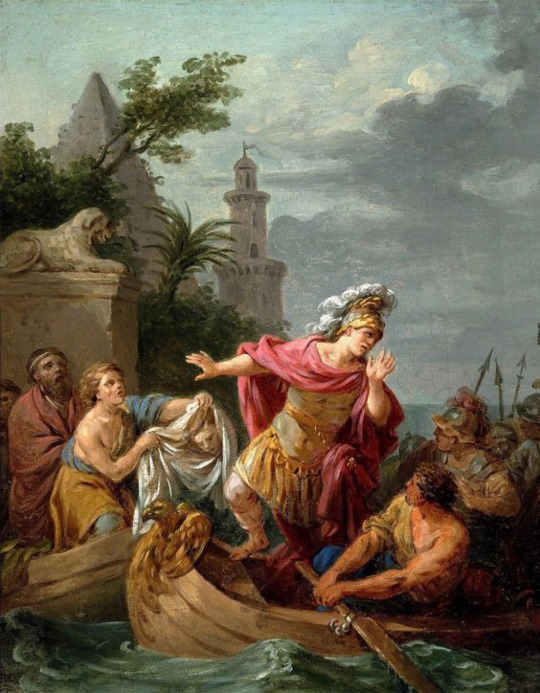
Caesar's Remorse at the Death of Pompey by Louis-Jean-François Lagrenée
#louis jean françois lagrenée#art#julius caesar#pompey#rome#roman#romans#civil war#roman republic#ancient rome#ancient egypt#egypt#history#antiquity#europe#european#caesar
103 notes
·
View notes
Video
Jey: “Better listen to your damn daddy, bruh.”
#wrestling#wwe#solo sikoa#jey uso#roman reigns#the bloodline#the bloodline civil war#money in the bank#mitb#my videos#jey was too damn proud of this line like everybody hadnt been saying the same damn joke to him and jimmy for years#sami said it not even that too long ago#i know he was just feeling it sitting in his soul and had to project it out onto someone else lmao
183 notes
·
View notes
Text
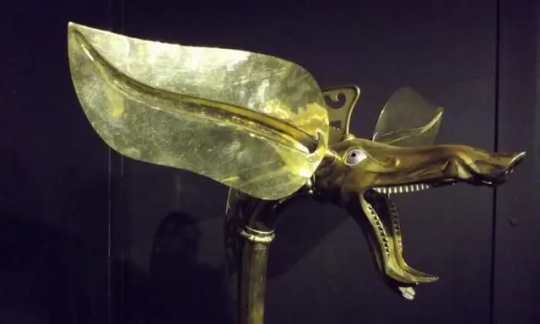

The 'Carnyx' Nightmare of the Roman Soldiers
The Carnyx was a brass musical instrument used as a psychological weapon of war by the ancient Celts between 300 BC and 200AD in western and central Europe and beyond.
The carnyx was once widespread throughout much of Europe, although only a dozen or so fragments are known to us.
It was carried by bands of Celtic mercenaries; it was present at the attack on the Greek sanctuary at Delphi in 279 BC; it defied Julius Caesar in Gaul; and it faced Claudius when he invaded Britain. They are even shown on a Buddhist sculpture in India, proof of the far-flung connections of the Iron Age world.
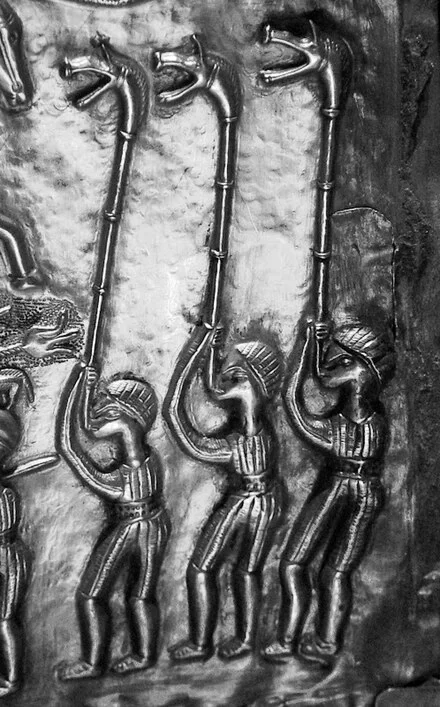
However, they were not only used by the Celts; they were also used by the Dacians in modern Romania. The term “Celtic” is a complicated one. The concept of a pan-European Celtic culture is a myth; rather, aspects of art and technology were shared across vast distances by diverse cultures. The carnyx was one example of this.
A 12-foot-long, thin bronze tube with right-angle bends on both ends made up the carnyx. The lower end ended in a mouthpiece, and the upper end flared out into a bell that was usually decorated to look like a wild boar’s had. Historians believe it had a tongue that flapped up and down, increasing the noise made by the instrument. The carnyx was played upright so that the boar’s head bell protruded well above the warriors’ heads. Its primary goal was to create more noise and confusion on the battlefield.
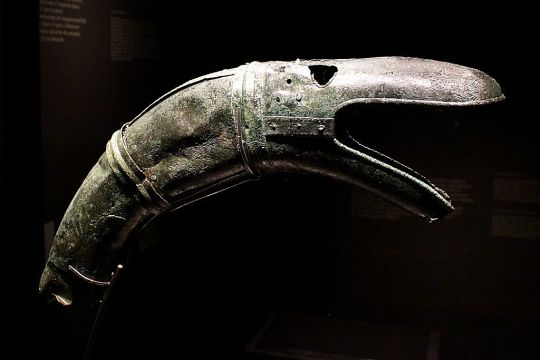
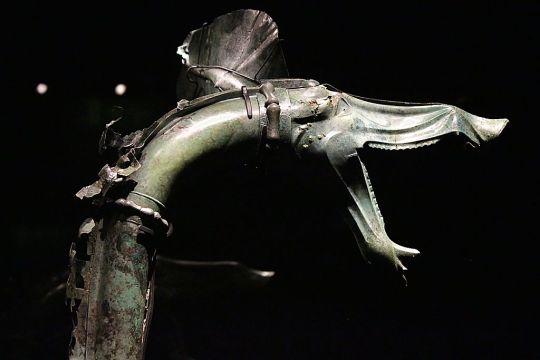

The Greek historian Polybius (206-126BC) was so impressed by the clamor of the Gallic army and the sound of the carnyx, he observed that “there were countless trumpeters and horn blowers and since the whole army was shouting its war cries at the same time there was such a confused sound that the noise seemed to come not only from the trumpeters and the soldiers but also from the countryside which was joining in the echo”.
And the Roman historian Diodorus Siculus wrote, “Their trumpets are also of a peculiar and barbaric kind which produce a harsh, reverberating sound suitable to the confusion of battle.”
Archaeologists discovered a hoard of ritually destroyed weapons in 2004, including a dozen swords, scabbards, spearheads, a shield, bronze helmets, an iron helmet shaped like a swan, a cauldron, animal remains, and seven carnyces. Before the Tintignac discovery, the remains of only five actual carnyces had been found.
The finest was unearthed in Deskford, Scotland in 1816. The Deskford carnyx only has the boar’s head bell and is missing the mane, tongue, and tubing. Images of Carnyx players have been found as well. A Roman denarius, dating from 48 BC bears a representation of a Carnyx. Three carnyx players are featured prominently on the Gundestrup Cauldron, which was found in a Danish peat bog.
One of the seven found at Tintignac, on the other hand, was almost entirely complete. The Tintignac Carnyx was broken into 40 pieces. When puzzled back together, it was found to be just an inch short of six feet long with a single missing section of the tube. The bell was a boar’s head with protruding tusks and large pointed ears. Once restored, the Tintignac Carnyx proved to be the first virtually complete carnyx ever found.
By Leman Altuntaş.
Music video by John Kenny.
#The Carnyx#The 'Carnyx' Nightmare of the Roman Soldiers#Iron Age war trumpet#ancient artifacts#archeology#archeolgst#history#history news#ancient culture#ancient civilizations#celtic mythology#celtic history#roman history#roman empire#roman legion
2K notes
·
View notes
Text

Apotheosis of Claudius, showing an eagle carrying the emperor off to the heavens to become a god after his death in 54 AD.
#ancient rome#ancient art#roman empire#emperor claudius#ancient history#ancient culture#ancient civilizations
794 notes
·
View notes